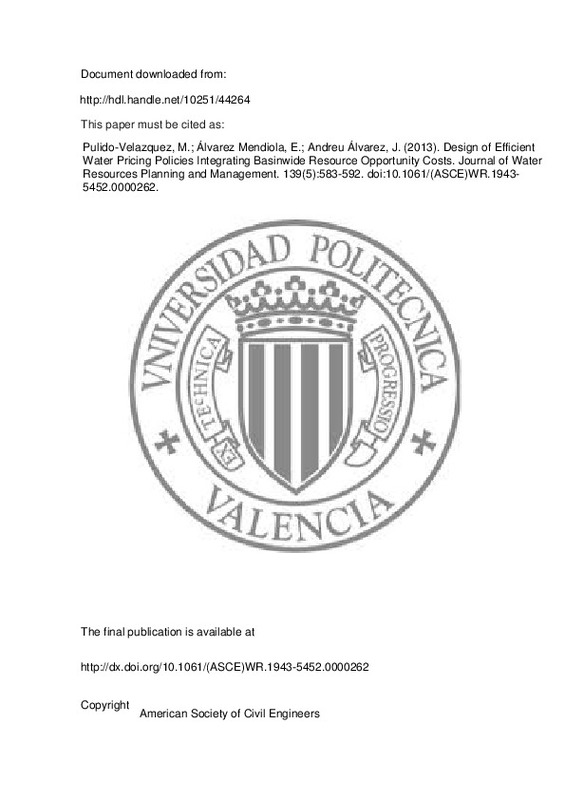JavaScript is disabled for your browser. Some features of this site may not work without it.
Buscar en RiuNet
Listar
Mi cuenta
Estadísticas
Ayuda RiuNet
Admin. UPV
Design of Efficient Water Pricing Policies Integrating Basinwide Resource Opportunity Costs
Mostrar el registro completo del ítem
Pulido-Velazquez, M.; Álvarez Mendiola, E.; Andreu Álvarez, J. (2013). Design of Efficient Water Pricing Policies Integrating Basinwide Resource Opportunity Costs. Journal of Water Resources Planning and Management. 139(5):583-592. https://doi.org/10.1061/(ASCE)WR.1943-5452.0000262
Por favor, use este identificador para citar o enlazar este ítem: http://hdl.handle.net/10251/44264
Ficheros en el ítem
Metadatos del ítem
| Título: | Design of Efficient Water Pricing Policies Integrating Basinwide Resource Opportunity Costs | |
| Autor: | Álvarez Mendiola, Eduardo | |
| Entidad UPV: |
|
|
| Fecha difusión: |
|
|
| Resumen: |
By ignoring the opportunity cost of water use, water is undervalued, which can lead to significant errors in investments and water
allocation decisions. The marginal resource opportunity cost (MROC) varies in time and ...[+]
|
|
| Palabras clave: |
|
|
| Derechos de uso: | Reserva de todos los derechos | |
| Fuente: |
|
|
| DOI: |
|
|
| Editorial: |
|
|
| Versión del editor: | http://dx.doi.org/10.1061/(ASCE)WR.1943-5452.0000262 | |
| Código del Proyecto: |
|
|
| Agradecimientos: |
This study has been partially funded by the EU 6th FP project AQUAMONEY (SSPI-022723), the 7th FP GENESIS project (226536), and SAWARES (Plan Nacional I+D+i 2008-2011, CGL2009-13238-C02-01 and C02-02) and SCARCE ...[+]
|
|
| Tipo: |
|







![[Cerrado]](/themes/UPV/images/candado.png)


